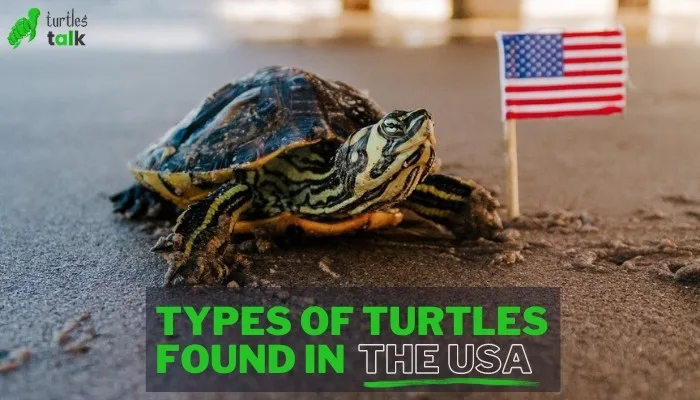Marvels of the Shell: Types of Turtles Found in the USA
Did you know that the US is home to more native turtle species than any other country?
Yep, the US is a true turtle paradise with a whopping 57 unique species under our skies, comprising about 18% of the estimated 328 species worldwide. From moss-covered freshwater friends to hardy terrestrial troopers—28 and 29 varieties respectively—we have them all!
So, strap in and hold onto your shells as we explore the different types of turtles found throughout the ol’ star-spangled banner. You’re in for a ‘turtle-y’ awesome journey! Let’s get started, shall we?
An Overview of the Turtle Species Dwelling in the US
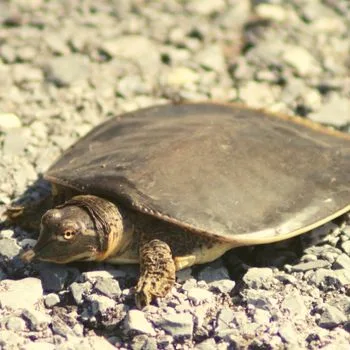
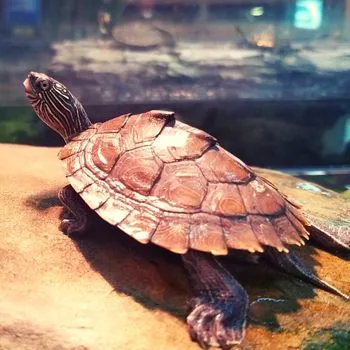
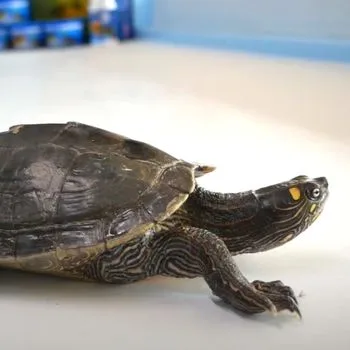
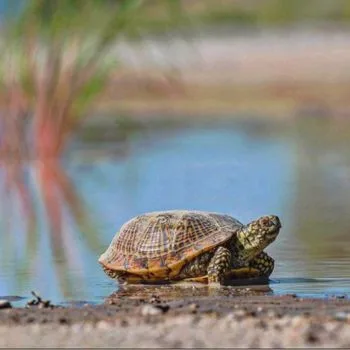
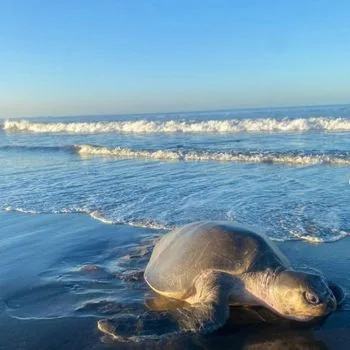
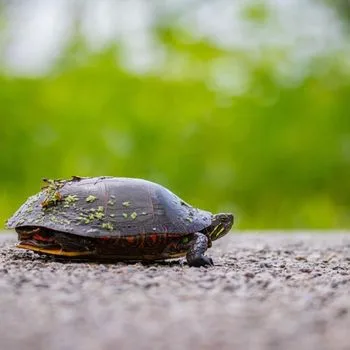
| Category | Data |
|---|---|
| Number of turtle species | 57 |
| Freshwater turtle species | 28 |
| Terrestrial turtle species | 29 |
| Sea turtle species | 2 |
| Threatened or endangered turtle species | 36 |
| Most common turtle species | Red-eared slider, Eastern box turtle, Wood turtle |
| Most endangered turtle species | Florida gopher tortoise, Kemp’s ridley sea turtle, Mississippi map turtle |
| Average lifespan | 20-30 years |
| Diet | Insects, worms, fish, plants, fruits |
| Habitat | Freshwater, terrestrial, marine |
| Conservation status | Many turtle species are threatened or endangered due to habitat loss, pollution, and overharvesting. |
3 Types of Turtles Found in the USA
The United States is home to a diverse assortment of turtle species living in various habitats ranging from oceans to freshwater bodies and semi-aquatic locales. Let’s dive deep into the world of these fascinating creatures.
A Close Look at Sea Turtles
In the vast oceans bordering the United States coastline, four significant sea turtle species have made their home.
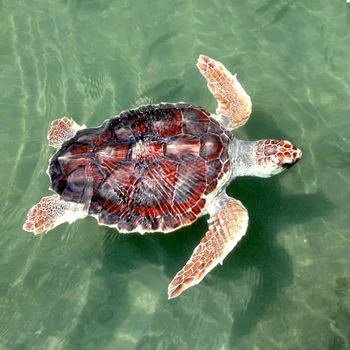
The Majestic Loggerhead Sea Turtle
The Loggerhead Sea Turtle is perhaps the most recognized of all sea turtles, distinguished by its large head and reddish-brown shell. Known for their lengthy migratory patterns, these creatures are indeed a wonder to behold.

The Endangered Leatherback Sea Turtle
The Leatherback Sea Turtle is the largest of all living turtles and is critically endangered. Distinguished by their leather-like shell and long flippers, these turtles live in deeper waters than most other turtle species.
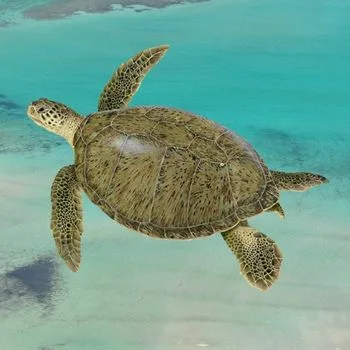
The Green Sea Turtle: A Herbivorous Species
The Green Sea Turtle is named for the greenish color of their cartilage and fat, not their shells. While young, they are omnivorous but turn completely herbivorous as they mature.
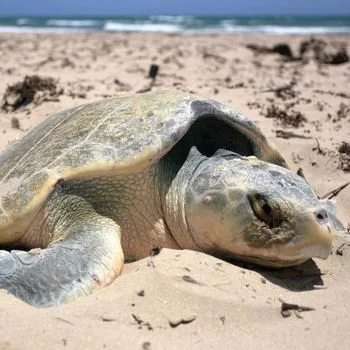
The Tiny Kemp’s Ridley Sea Turtle
The Kemp’s Ridley Sea Turtle is the smallest of the sea turtles. They are renowned for their synchronization when nesting, an event known as ‘arribadas.’
Diving into Freshwater Turtles
Shifting from saline waters to freshwater bodies, an assortment of turtles can be found thriving in the lakes, streams, and ponds of the United States.
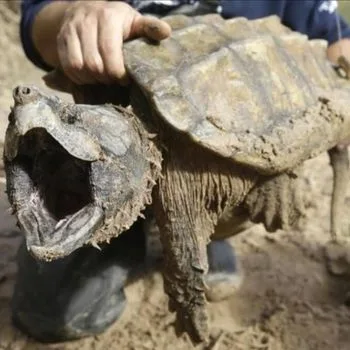
The Iconic Alligator Snapping Turtle
Alligator Snapping Turtles are one of the heaviest freshwater turtles in the world. Their dinosaur-like appearance and powerful jaws make them both intimidating and fascinating.
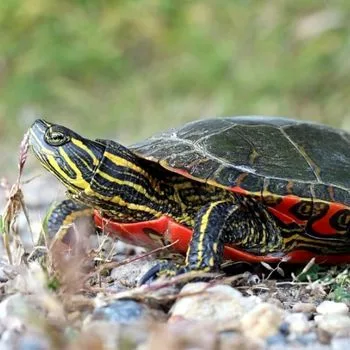
The Painted Turtle: A Common Sight in Ponds
The Painted Turtle is the most widespread native turtle in North America and is often seen basking in large groups. Their distinctive colorful markings make them easily identifiable.
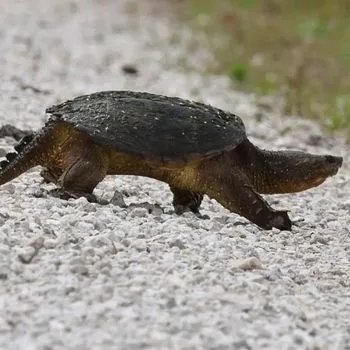
Common Snapping Turtles
The Common Snapping Turtle resides in a wide variety of water bodies across North America. Despite their commonality, they are no less fascinating, especially their strong penchant for burrowing in the mud.
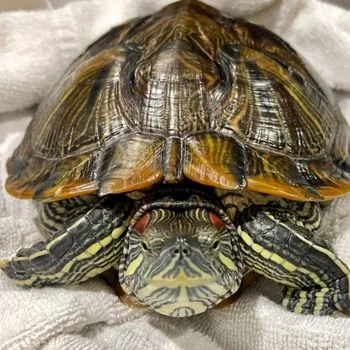
Red-Eared Slider
The Red-Eared Slider is popular in pet trade due to their vibrant green shell and red stripe behind the eye. However, they are considered an invasive species outside their native habitats.
A Brief Glance at Semiaquatic Turtles
Semiaquatic turtles possess a unique ability to exist both in water and on land, such as the Eastern Box Turtle and the Western Pond Turtle.
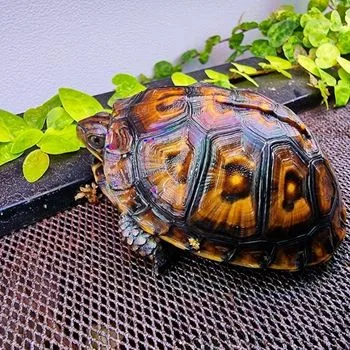
Eastern Box Turtle
The Eastern Box Turtle is known for their domed carapace and hinged plastron which allows them to completely withdraw into their shell. Despite their aquatic name, they are more terrestrial in nature.
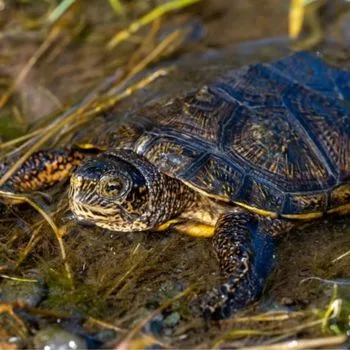
Western Pond Turtle
The Western Pond Turtle is a native species to the US west coast. These medium-sized turtles gain a beautiful patina with age that gives them their ‘old western’ charm.
Turtles Across Different Regions in the USA
The USA is the home to numerous types of turtles. They can be found across different regions of the country. Let’s take a closer look at some of these areas:
Northeast United States
In the northeast region, there are several species you might encounter. One of the most common species is the Eastern Box Turtle. They’re known for their distinctive hinged shell which can completely close to protect from predators.
Another interesting species is the Northern Diamondback Terrapin. You could find this semi-aquatic turtle in the brackish waters along the eastern seaboard. Finally, the Snapping Turtle, with its imposing size and aggressive attitude, is a marvel of the Northeast.
- Turtles in Connecticut
- Turtles in Delaware
- Turtles in Maine
- Turtles in Maryland
- Turtles in Massachusetts
- Turtles in New Hampshire
- Turtles in New Jersey
- Turtles in New York
- Turtles in Pennsylvania
- Turtles in Rhode Island
- Turtles in Vermont
Midwest United States
Moving towards the heart of America, the Midwest is rich with a variety of turtle species. The common Painted Turtle, with its stunning colors, is ubiquitous in this region. This small, pretty creature is often seen in ponds, lakes, and marshes.
Then there is the Blanding’s Turtle often found in the Great Lakes area. And not to forget the Spiny Softshell Turtle, unique for their soft, pancake-like shell.
- Turtles in Illinois
- Turtles in Indiana
- Turtles in Iowa
- Turtles in Kansas
- Turtles in Michigan
- Turtles in Minnesota
- Turtles in Missouri
- Turtles in Nebraska
- Turtles in North Dakota
- Turtles in Ohio
- Turtles in South Dakota
- Turtles in Wisconsin
Southern United States
The southern states offer a warm climate that’s appreciated by many reptiles, including turtles. The Red-Eared Slider, named for the distinctive red stripe behind its eyes, is one prevalent species here.
You might also encounter the Alligator Snapping Turtle. This behemoth lurks at the bottom of rivers and lakes and can weigh up to 175 pounds, making it one of the largest freshwater turtles in North America.
- Turtles in Alabama
- Turtles in Arkansas
- Turtles in Florida
- Turtles in Georgia
- Turtles in Kentucky
- Turtles in Louisiana
- Turtles in Mississippi
- Turtles in North Carolina
- Turtles in South Carolina
- Turtles in Tennessee
- Turtles in Texas
- Turtles in Virginia
- Turtles in West Virginia
Western United States
The western region presents a diverse range of geographical conditions from deserts to coastal areas – and that also means a whole lot of turtle diversity. The Desert Tortoise, known to live up to 100 years, calls the arid Mojave and Sonoran deserts home.
In contrast, the Pacific Pond Turtle can be spotted enjoying the calm waters of the Pacific coast. Additionally, the Western Painted Turtle, cousin to the one we discussed in the Midwest, also makes its appearance here.
- Turtles in Arizona
- Turtles in California
- Turtles in Colorado
- Turtles in Montana
- Turtles in Nevada
- Turtles in New Mexico
- Turtles in Oregon
- Turtles in Utah
- Turtles in Washington
- Turtles in Wyoming
The Importance of Protecting USA Turtle Species
Understanding the profound importance of protecting turtle species across the United States is paramount to ensuring their overall survival for generations to come. Turtles are integral components of their respective ecosystems, offering valuable roles in maintaining the health and stability of their environments. From aiding in nutrient dispersal to playing pivotal roles in food chains, their survival is directly linked to the well-being of our planet.
Role of Conservation Organizations
Conservation organizations in the USA play a significant role in providing necessary resources and strategies to safeguard these beloved creatures. Many of these organizations work tirelessly to encourage responsible behavior amongst residents as well as implementing programs that help sustain the turtles’ natural habitats. They conduct extensive research and field studies, lobby for legal protections, and run educational campaigns to boost public awareness about the precarious state of these species.
Impact of Climate Change and Human Interference
Perhaps the most pressing threat to turtles in the USA is the dual impact of climate change and human interference. Various human activities, along with the strides of global warming, have adversely impacted turtles across the country, pushing several species to the verge of extinction.
Sea-level Rise and Coastal Development
Sea turtles, for instance, are deeply affected by the rise in sea levels and coastal development. Sea-level rise, as a result of climatic changes, is causing the erosion of beaches, leading to the loss of ideal nesting sites for turtles. At the same time, rapid coastal development for human residential and tourism purposes is also significantly reducing and destroying these crucial nesting habitats, compromising the reproduction potential of sea turtles.
Pollution and its Impact on Turtle Habitats
Moreover, pollution, particularly plastic marine debris, has devastated the habitats and life cycles of various turtle species. Turtles often mistake plastic waste for food, leading to serious health complications, including death. Furthermore, pollution can degrade the quality of the water, impacting the availability of food and altering the turtles’ natural living conditions. Therefore, human induced pollution significantly contributes to the turtle species decline.
Turtle conservation efforts are vital to protecting these beautiful creatures and their habitats. However, many people are unaware of the ways they can contribute. Let’s explore some ways you can get involved in these critical efforts and immerse yourself in this noble cause.
How to Get Involved? Volunteer Options
There are numerous avenues to get involved in turtle conservation efforts. Many local organizations and wildlife sanctuaries often seek volunteers for various tasks. These tasks can range from helping with turtle nesting projects, where you assist in safeguarding sea turtles during their vulnerable nesting period, to turtle rehabilitation programs, where you help injured turtles recover.
If you’re looking to make a larger commitment, consider undergoing training to become a certified turtle specialist. Organizations such as the Turtle Survival Alliance offer extensive programs that cover turtle biology, behavior, and conservation techniques. Once certified, you can participate directly in rescue missions and contribute to research initiatives.
Improving Awareness about Turtle Conservation
Raising awareness about turtle conservation is equally as important as volunteering. Simply spreading the word about the importance of protecting these animals and their habitats can do wonders in garnering support for these efforts.
One way to raise awareness is by starting with your immediate circle. Talk to your friends, family, and colleagues about the importance of turtle conservation. Educate them on the threats these animals face, such as habitat loss, poaching, and climate change, and how they can contribute to the conservation efforts.
Social media is another great tool for spreading the word about turtle conservation. Follow turtle conservation organizations on platforms like Facebook, Instagram, and Twitter and share their posts with your followers. You can also write blogs or articles to help educate others about the plight of turtles and what they can do to help.
Lastly, organizing or participating in local community events centered around turtle conservation can boost awareness on a larger scale. These could range from beach clean-ups to informational seminars. Remember, every effort counts and together we can make a huge difference for these amazing creatures.
What to Do If You Come Across a Turtle in the USA
I. Discovering the Turtle
Spot The Turtle
The first step needs you identifying the turtle either in your backyard or any open space.
Maintain a Safe Distance
Do not rush up to the turtle directly. It’s important to maintain some distance to avoid scaring or stressing the creature.
Assess the Situation
Determine if the turtle is in immediate danger, such as being in the middle of the road or tangled in debris.
II. Identifying The Turtle
Note the Basic Features
Look out for basic identification traits such as the type of shell, color, size, and markings. These details will help you identify the species of the turtle.
Use an Online Guide
Use a well-regarded online wildlife identification guide like the National Audubon Society’s guide to identify the species of the turtle.
III. Handling The Turtle
Approach Carefully
If you decide to move the turtle, approach it slowly and calmly.
Lift Correctly
Always handle a turtle gently and avoid picking them up by their tails or legs. Instead, hold them with both hands from the middle of their shell.
Move Respectfully
Never throw or drop the turtle. Carefully set the turtle down to ensure it comes safely to the ground
IV. Reporting The Turtle
Contact Local Wildlife Authority
If the turtle is injured or you are unsure about handling it, contact your local wildlife authority or local Forest Ranger.
Provide the Right Information
Give them precise information on the location of the turtle and the situation.
V. Preventing Future Encounters
Modify Your Landscape
Review the current landscaping and fencing around the area where the turtle was found, and, if possible and reasonable, try to modify it to discourage future unwanted guests.
Educate Yourself and Others
Learn more about the local turtle species and educate your family and neighbors about the importance of protecting wildlife.
VI. If The Turtle is a Pet
Look for Signs of Domestication
Check if the turtle has any signs like paint or other human-made markings that might signify it may be a lost pet.
Contact Relevant Authorities
This could include local pet rescue centers or animal control.
Use Social Media
Post about the turtle on local online community boards or social media. The owner may be looking for it.
Remember, every creature plays a vital role in the ecosystem, and turtles are no different. If you come across a turtle, it’s most crucial to handle the situation calmly and humanely.
Conclusion
From the mighty snapping turtles to the vibrant painted turtles, these remarkable creatures contribute to the rich biodiversity of the country. Whether found in lakes, rivers, or wetlands, these turtles are a testament to the resilience and beauty of nature. By understanding and appreciating the various types of turtles found in the USA, we can better protect and preserve these captivating creatures for generations to come.
:How Does the Diet of River Turtles Compare to Other Types of Turtles Found in the USA?
River turtles in the USA have diverse diets, depending on their species and habitat. For example, while some species primarily eat aquatic plants and algae, others are omnivores and consume fish, insects, and small animals. Their river turtle diet habits can vary significantly from other types of turtles found in the country.

